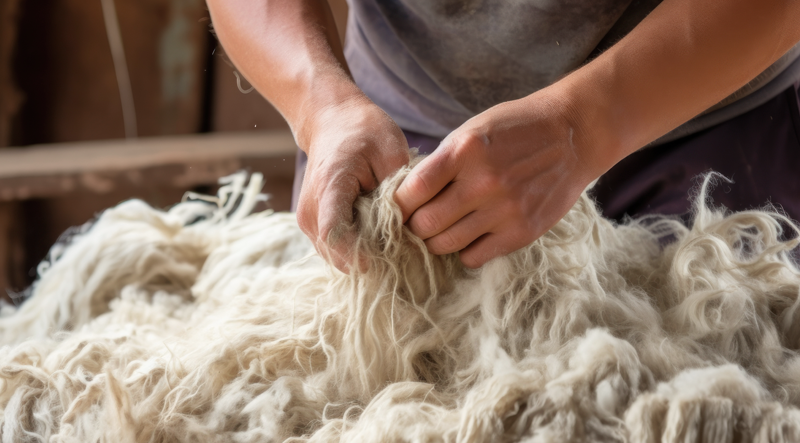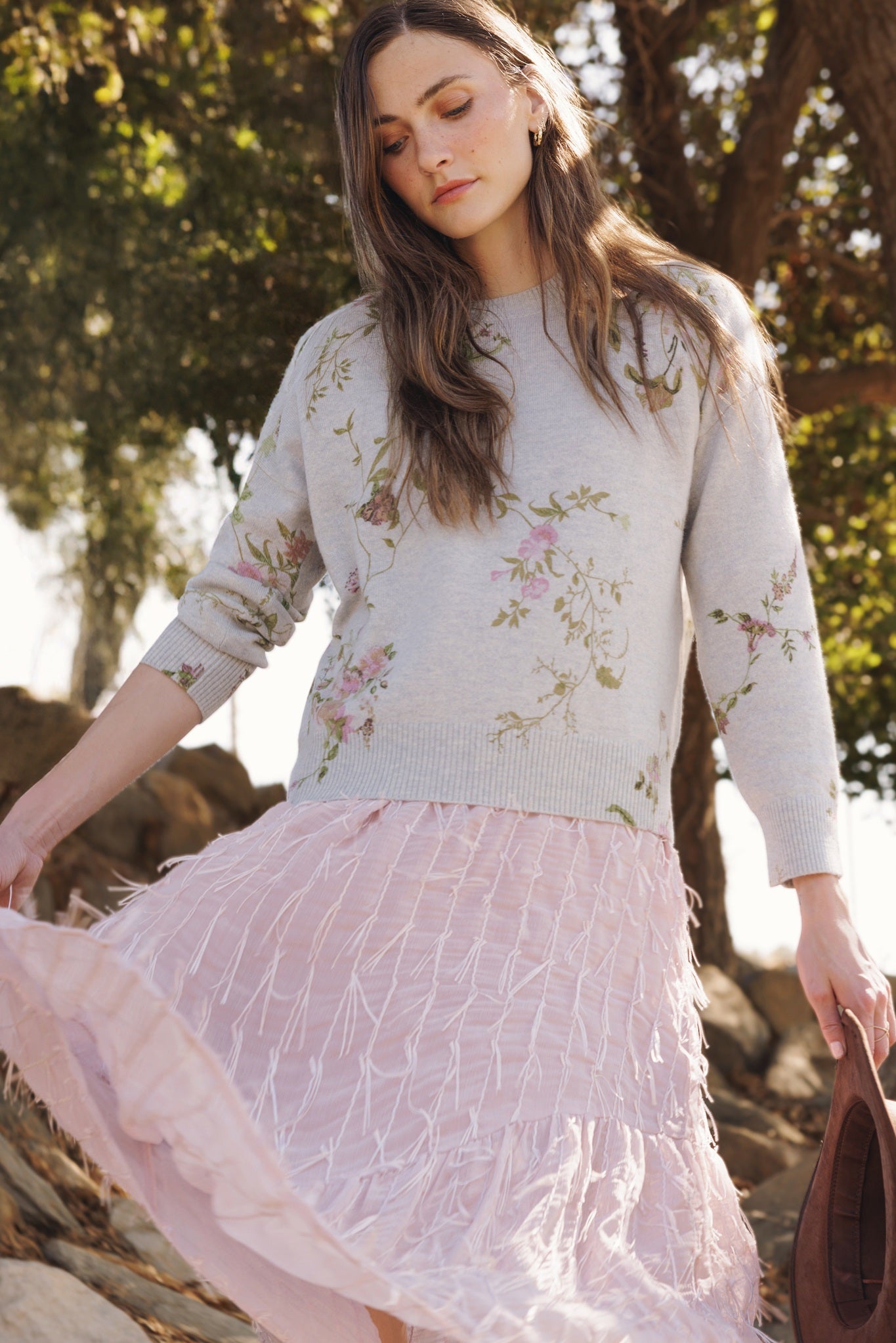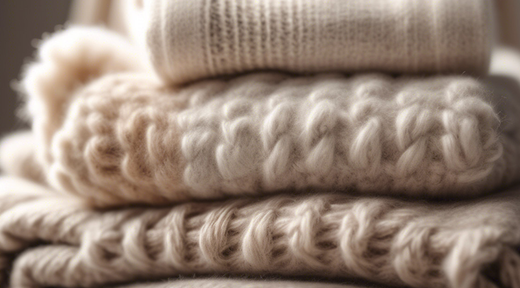
Wool vs. Cashmere: Understanding the Differences, Origins & Benefits
When it comes to fabrics that redefine comfort and style, wool and cashmere reign supreme. But let's be honest, most of us have whispered, “Aren’t they the same thing?” at some point. The truth is, they are not.
Living in the same realm of indulgence yet worlds apart in character, Wool and Cashmere have a story of their own, a texture and individual purpose, which makes them equally valuable but in different ways.
So, come along as we untangle the threads of Wool and Cashmere while unravelling their secrets and decode their language of luxury. By the end, we promise you will know which one to choose.
The Tale of Two Fibers: Wool and Cashmere
Before escalating further, let's get one thing straight: Wool and Cashmere may seem similar, but they’re entirely different in source, texture, and appeal.
|
Features |
Cashmere |
Wool |
|
Source |
This luxurious fiber is sourced from the undercoat of Cashmere goats (Capra aegagrus hircus), a true masterpiece of nature. Being wrapped up in one will feel nothing less than a gentle hug from winter itself. |
Wool is sourced from a variety of sheep breeds, and its versatility is unmatched. From chunky sweaters to sleek suits, choosing wool means choosing practicality, durability, and adaptability. |
|
Texture |
Cashmere fibers are exceptionally fine, typically ranging from 14 to 19 microns in diameter, resulting in a supremely soft and smooth texture. This fineness allows cashmere garments to feel gentle against the skin, providing unparalleled comfort. |
Unlike cashmere, wool has a coarser texture, but don’t let that fool you. Wool’s structure makes it a natural temperature regulator, perfect for keeping you cozy on brisk days or cool during warmer ones. |
|
Appeal |
Renowned for its luxurious allure, cashmere is often associated with high-end fashion and exclusivity. Its rarity and the meticulous process involved in harvesting the fibers contribute to its premium status. |
Wool, particularly from Merino sheep, is celebrated for its versatility and practicality. It seamlessly transitions between casual and formal settings, making it a staple in many wardrobes. |
The Origin Story: From Mountain Goats to Masterpieces
Every fiber has a tale to tell, and the journey it makes from goat to garment is where the magic lies.
1. The Journey Begins:
Cashmere goats thrive in harsh climates in the vast terrains of China and Mongolia, while developing a downy undercoat to survive the bone-chilling cold. This undercoat is combed to extract the raw materials.
2. The Craft of Cashmere
The journey of cashmere is as much about nature as it is about skill. Once the soft undercoat is harvested from cashmere goats, it undergoes a careful process of cleaning and dehairing. Unlike many fabrics, the fiber’s delicate nature requires an extraordinary level of attention to preserve its softness and strength.
3. The Artisan’s Touch
While Cashmere may breeze through factories, Wool is determined to take the artful route. Every scarf or shawl is lovingly hand-spun and hand-woven with passion and precision, with some pieces taking weeks to craft.
It is in these precise details that cashmere earns its reputation, not just as a fabric but as true craftsmanship.
Wool vs Cashmere
Unraveling the finest details that set Wool and Cashmere apart.
Threads of Distinction
- Wool: Typically sourced from sheep, wool fibers are coarser, ranging from 20 to 40 microns in diameter. This coarser texture contributes to its durability and elasticity.
- Cashmere: Derived from the undercoat of cashmere goats, cashmere fibers are finer, usually between 14 to 19 microns in diameter. This finer texture results in a softer feel but also makes it more delicate
The Warmth Factor
- Wool: Provides excellent insulation, making it suitable for colder climates. Its natural crimp allows for air pockets, enhancing its insulating properties.
- Cashmere: Offers superior warmth, often considered up to eight times warmer than merino wool. This exceptional insulation is due to the finer and more numerous fibers.
Durability That Lasts
- Wool: Known for its resilience and elasticity, wool can withstand regular wear and maintain its shape over time.
- Cashmere: While incredibly soft and warm, cashmere is more delicate and requires gentle handling to preserve its quality.
The Itch Factor
- Wool: While wool is renowned for its warmth, its coarser fibres can sometimes cause itching, especially for those with sensitive skin.
- Cashmere: Cashmere is softer and less likely to cause itching due to its finer fibers, making it ideal for sensitive skin.
Wool vs. Cashmere: Which One’s for You?
When deciding between wool and cashmere, consider your lifestyle and the garment's purpose.
- Wool is a versatile option, offering durability and excellent insulation for colder months. It’s ideal for everyday wear or active outdoor pursuits, as it tends to be more robust and easier to maintain.
- Cashmere, on the other hand, is a luxurious choice for those seeking a soft, lightweight fabric that exudes elegance. Perfect for layering or as a standalone piece, cashmere works well for formal occasions or when you want to elevate your outfit.
If practicality is key, lean toward wool, but for indulgence and refinement, cashmere is unparalleled.
Conclusion
Whether you’re team Wool or team Cashmere, one thing’s for sure: both fabrics are a symphony for your senses. They’re not just accessories; they’re experiences, memories, and investments in feeling fabulous.
So, next time you’re lounging by the fire or taking a sunset stroll, drape yourself in a piece that feels as good as it looks. Explore the luxurious collections at 27 Miles Malibu & let Wool and Cashmere redefine your idea of comfort.





